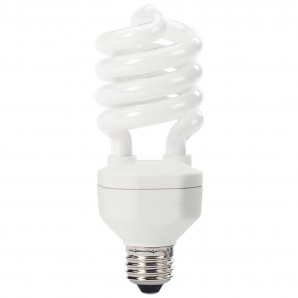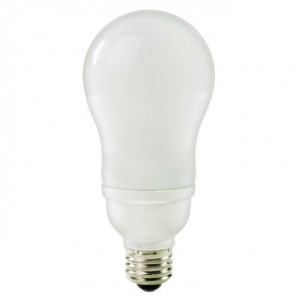|
Although LED light bulbs have become increasingly popular, you may still be choosing CFL bulbs due to their lower initial cost and energy efficiency compared to incandescent or halogen bulbs. If so, you may be deciding between spiral or spring-shaped CFLs and covered CFLs, which look more like the bulbs you're replacing. If so, which should you choose? The reason for choosing a covered CFL is strictly for esthetics. If you want the energy savings of a CFL but you're not a fan of the spiral look, you can choose a covered bulb. The look of a bulb may not matter in shaded lamps, for instance, but it might become more important (for instance) in an open fixture above your kitchen table where the bulb is in view.
There are some drawbacks to covered CFLs, however, and you should know that before choosing them over spiral bulbs. Because the cover traps heat, these bulbs use a mercury amalgam requiring a higher temperature for the bulb to reach full brightness. So they take longer to produce all the light they're capable of. While a spiral might reach full brightness in 60 seconds or less, a covered bulb might take closer to 3 minutes. As a result of the higher temperatures, a covered bulb also has a shorter rated life span. A spiral bulb could last up to 10,000 or 12,000 hours (check the packaging for the rated life) while a covered bulb might only be rated for 8000 hours. This is still a much longer life than an incandescent bulb. When choosing either type, it's important to remember some things about CFLs in general:
We hope this helps you to better understand CFLs in general and, more specifically, your choice between spiral-shaped and covered CFL bulbs.
0 Comments
Your comment will be posted after it is approved.
Leave a Reply. |
This blog's content is copyright © 2014-19 Lighting Supply.


